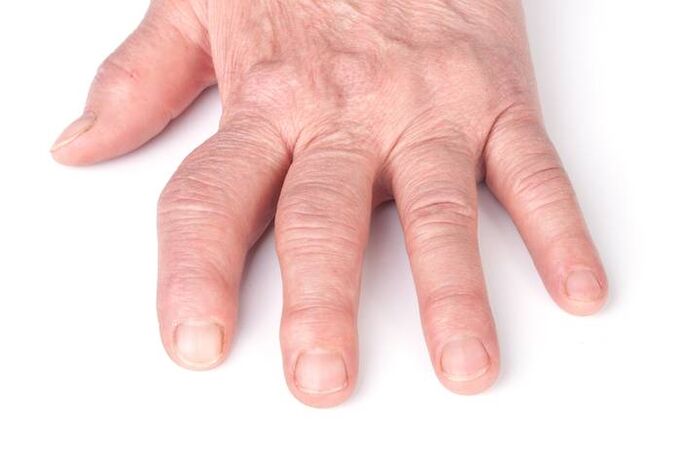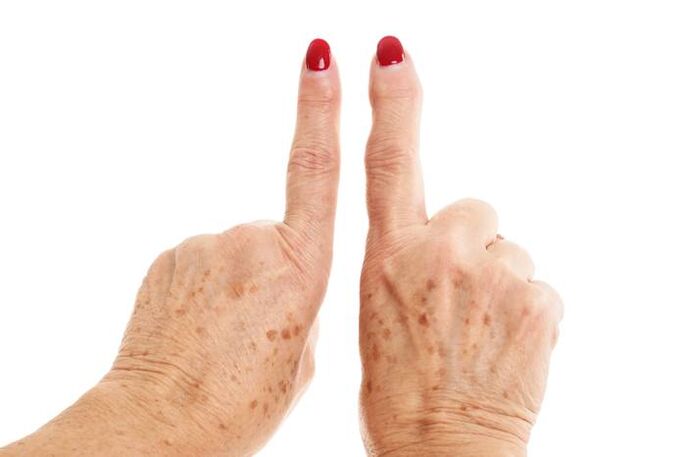Deforming arthrosis (osteoarthritis) is a progressive pathology that leads to dystrophy and degeneration of the joint surfaces and cartilage damage, all the way to complete destruction in the area of the joints.
Usually deforming arthrosis is detected in old age, in the presence of concomitant factors and disease, it is often detected during the examination, but does not manifest itself clinically.
Deforming arthrosis is the most common and widespread pathology of the joints. It occurs in 70% of all joint diseases.
Causes
The exact cause of deforming arthrosis has not yet been elucidated, but some factors have been identified that reliably increase the likelihood of its development. First of all, these are general aging of the body and dystrophic phenomena in tissues, changes in cartilage and joint capsules.
Factors influencing the development of osteoarthritis can be divided into:
- external - they include joint overload (for example, due to lifting weights), permanent injuries, impacts at work, joint hypothermia,
- internal - it is the impact of heredity with ligament overexertion and joint looseness, ovarian dysfunction and menopausal changes in women, vascular accidents, impaired blood circulation in cartilage tissues, obesity.
Deforming arthrosis, as one of the symptoms, can be with alcoholism or myxedema, acromegaly or with hormonal treatment, with congenital hip dislocation, Marfan syndrome (an inherited disease characterized by excessive joint mobility and elongation of tubular bones). joint stiffness)
Stages of development
In the development of deforming arthrosis, there are a number of regular successive phases that are replaced:
- reduction of cartilage water content, which leads to its thinning and drying,
- formation of defects and cracks in cartilage,
- destruction of cartilage with a simultaneous sharp narrowing of the joint space,
- disappearance of cartilage from bone margins,
- compensatory compaction of the ends of bones that have been left without a cartilaginous surface,
- joint disorder with sprains, fractures, and limb dysfunction.
Symptoms of deforming arthrosis
First of all, the main manifestation of deforming arthrosis is
- joint pain, stronger after exercise or at night,
- individual joints are affected,
- the affected joints are not symmetrical,
- at the same time, there are no common manifestations of joint damage,
- there is no fever
- no strong redness of the joints,
- there are no changes in the analyzes.
The process often occurs in the ankle, knee, hip, or interphalangeal joint.


If the disease progresses to the degree of destruction of cartilage, there is a painful blockade of the joint, when walking there is severe pain that does not allow the legs to move and stops it. This is due to the entry of pieces of cartilage or small bone fragments ("joint mice") into the joint cavity.
In the area of the joints on the phalanges, nodular, very hard formations appear, while the joints are not strongly deformed, the muscles are not subject to atrophy and there is no ankylosis (immobility of the joints).
Inside the joints, when moving, a squeak is heard due to the friction of uneven surfaces against each other.
Pain and limited mobility can cause contractures (muscle contractions) that shorten the legs or arms.
Deforming arthrosis is similar in its manifestations to different forms of arthritis, first of all it must be different from rheumatoid arthritis.
Diagnosis
There are no typical criteria for the diagnosis of deforming arthrosis; they can only be recognized outwards by the nodes on the phalanges of the fingers. Osteoarthritis is suspected when:
- typical joint damage,
- long-term development of the disease over many years,
- elderly patient.
The basis of the diagnosis is X-ray data that appear even before the period of clinical manifestations and pain syndrome.
There is a narrowing of the joint space, there are noticeable changes with the alignment and deformation of the joint surfaces, instability in the joint area with dislocations and subluxations, marginal bone growths, osteosclerosis (excessive increase in bone density).
As the process progresses, bone spines and protrusions are revealed, and the joint space can become wedge-shaped.
The study was supplemented by arthroscopy, a blood test without signs of inflammation.
Periarticular fluid examination should be performed.
Treatment of deforming arthrosis
Treatment is performed by traumatologists and orthopedists.
Methods of treating deforming arthrosis depend on the degree of joint involvement in the process, as well as the duration of the lesion and the presence of pain.
First of all, conservative therapy is used.
- reduction of stress on the joints,
- weight loss,
- use of metabolites - the flow of aloe or vitreous intramuscularly,
- use cartilage regeneration stimulants in intramuscular injections on courses.
Complements the treatment:
- use of quinolone drugs,
- anti-inflammatory therapy.
If there is inflammation in the joint, the flow of hormones inside the joint is indicated.
Complex massage, physiotherapeutic effects, mud therapy, thermal effects are also used. Spa treatment is beneficial.
In advanced cases, surgical treatment - arthroplasty of the joints - helps. In the future, unloading of the joint, weight loss, walking with a support on a stick or crutches, physiotherapy exercises will be shown.
Forecast
Deforming arthrosis without the necessary treatment has a slow but constantly progressive course. It leads to disability and significant joint dysfunction, movement disorders. Therefore, when the first signs of osteoarthritis appear, active therapy is indicated, which lasts 1-2 months.



































